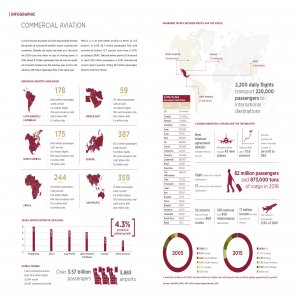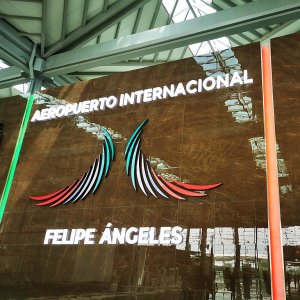Latin America 'Ambassador' Launches Business Model

STORY INLINE POST
Q: How has the global aviation market changed during the past year?
A: The aviation industry is always in transformation as technologies and passenger preferences change quickly, pushing the sector to evolve. The World Economic Forum puts Latin America among the areas with the most growth potential for tourism. We have also seen trips within Latin America and to the region increase, a trend that we expect to continue through 2017. In 2016, LATAM Airlines grew by 4 percent in passengers globally and during the first half of 2017 our growth approached 6 percent. We expect to build on this and grow by 4-6 percent in passengers during 2017. The analysis of passenger travel patterns suggests that Latin America is increasingly popular, as is Mexico. About 80 percent of our ticket sales in Mexico are through travel agencies, which have reported a decrease in flights to US destinations such as New York and Las Vegas and a rise in demand for destinations such as Peru and Argentina. There is also growth potential for the region. In comparison to the rest of the world, Latin America has a low rate of passengers per capita. In Mexico, this number is 0.6. The US, by comparison, has the highest rate on the continent at 2.4.
Q: How is LATAM Airlines’ business model changing in response to market trends?
A: LATAM Airlines is different from other carriers because it is associated with the entire region, not just one country. LATAM Airlines has operations in six countries; Chile, Brazil, Peru, Argentina, Colombia and Ecuador, from where it flies to four continents. This global ambassador to Latin America also offers domestic flights within those six countries that represent 77 percent of our total passengers.
In 2017, we successfully launched a new product to meet emerging passenger needs. Customers are interested in flexible trips and access to new technologies, as well as more cost-effective options. This new sales model is exclusive to domestic flights in Chile, Brazil, Peru, Argentina, Colombia and Ecuador and includes disaggregated tariffs, allowing clients to pay for only what they need. This model is being launched gradually throughout these six countries. We started in Chile followed by Peru and expect to incorporate the remaining four in 2017. The model will not turn LATAM Airlines into a low-cost carrier but will allow us to compete with them. On the other hand, we will maintain our existing product for international, long-haul flights, which includes a well-positioned loyalty program, a good entertainment system and excellent business-class cabins. LATAM Airlines wants to strengthen its presence in the region. LAN and TAM airlines merged operations in 2012, a significant feat as the fleet of both airlines surpassed 300 aircraft. With US$69 million in revenues, LATAM's assets went into the black in 2016.
Q: Which other alliances and routes is LATAM Airlines creating to improve connectivity?
A: As part of the One World alliance, we work with 14 airlines across the world. Growing organically globally is expensive and risky, but both expenses and risks can be lowered through alliances. We will open a new route from Lima to San Jose, Costa Rica, a destination that is growing in popularity at a global level due to its natural wonders and tourism infrastructure. Another route is Santiago-Melbourne, which will also be the longest route for LATAM Airlines. The route will use a wide-body aircraft as it involves a strong cargo component.
Q: How is LATAM Airlines strengthening its position in Mexico?
A: From Mexico, we fly to three of our main hubs, Santiago, Sao Paulo and Lima. More important than the number of flights we offer is the connectivity from those hubs, which has grown significantly. Our goal is to improve overall connectivity within and outside the region. Our search for ways to improve connectivity for travelers outside of Mexico City and Cancun led us to arrange an alliance with Interjet. This alliance will facilitate connections with Latin America.
























